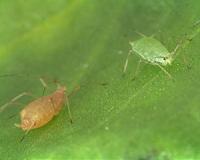| . |  |
. |
Johannesburg (AFP) May 11, 2011 Ricky and Rachel, rhinos in love, are torn apart by poachers in a new South African musical, "African Adventure", which aims to dramatise the rising toll of illegal hunting on the endangered species. The children's play, showing at Johannesburg's Joburg Theatre, has a simple plot: evil poachers capture Rachel and use her as bait to lure Ricky so they can take both animals' horns. But with the help of his friends Lynette the snobby giraffe, Olivia the cheeky ostrich and Malcolm the naughty monkey, the young rhino manages to save his love. "I believe that not just adults but kids as well need to be aware of what is happening" to Africa's rhinos, said Tracey Christelis, the playwright, who originally envisioned the story as a children's book. The statistics on rhino poaching are increasingly grim, as demand for rhino horn is booming in Asia. In South Africa, poaching has risen year by year, from 13 cases in 2007, to 33 in 2008, to 122 in 2009, to 333 last year. And the pace has continued to accelerate. The country has lost one rhino a day to poaching so far this year. There are around 21,000 rhinos, both black and white, left in South Africa, home to 70 percent of the world's remaining population. Across Africa, there are some 25,000 rhinos remaining, a fraction of the hundreds of thousands thought to have roamed the continent in 1900, according to the International Union for Conservation of Nature. Maureen Schuil, an honorary ranger with South African National Parks (SANParks), drives home the message to kids before the show. -- 'We need to catch guys who buy the horns' -- ----------------------------------------------- "We are losing our rhinos! They are really cruelly trapped. We do not want our animals to disappear," she said. But Frik the poacher tells his audience why the problem persists. "Our friends in China believe that the horns can cure incurable sickness," he says. In Asia, rhino horn is believed to have medicinal properties from reducing fever to curing cancer. A horn can fetch tens of thousands of dollars on the black market. Conservationists have tried various plans to stop the carnage: removing the horns preemptively, implanting them with microchips and infiltrating poaching syndicates. SANParks has created a special anti-poaching unit, reinforced since April by South African army patrols. "They are doing the best they can but there is a serious shortage of funds and equipment," said Kevin Bewick, head of the Anti-Poaching Intelligence Group Southern Africa. Bewick said South Africa's ruling party, the African National Congress (ANC), has cut funding for environmental protection programmes since coming to power in the first democratic elections in 1994. "The ANC is people-oriented, they are not conservation-oriented," he said. "Their concern is people -- fighting inequalities, housing, jobs, etc." The problem has been exacerbated by other factors, he added. A growing number of Chinese nationals are living in Africa. Some private game reserve owners have cut deals with poaching syndicates. Officials have torn down a border fence between South Africa's renowned Kruger park and its Mozambican neighbour -- giving free range to animals but also to poachers. But Schuil, the honorary ranger, said the problem needs to be tackled on the demand side, too. "It's the guys who buy horns that we need to catch, maybe more than the poachers themselves," she said.
Share This Article With Planet Earth
Related Links Darwin Today At TerraDaily.com
 Variety is the spice of life for animal movement
Variety is the spice of life for animal movementLeicester UK (SPX) May 11, 2011 Scientists at Royal Holloway, University of London and the University of Leicester have discovered animals searching for food do not stick to a complicated pattern of movement as previously thought but tend to wander about randomly. It was previously believed that when searching for food, animals move in very peculiar way called a Levy flight where they move small distances most of the tim ... read more |
|
| The content herein, unless otherwise known to be public domain, are Copyright 1995-2010 - SpaceDaily. AFP and UPI Wire Stories are copyright Agence France-Presse and United Press International. ESA Portal Reports are copyright European Space Agency. All NASA sourced material is public domain. Additional copyrights may apply in whole or part to other bona fide parties. Advertising does not imply endorsement,agreement or approval of any opinions, statements or information provided by SpaceDaily on any Web page published or hosted by SpaceDaily. Privacy Statement |